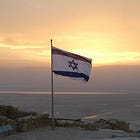There is No "Genocide" in Gaza
The accusation is false as a matter of fact, morality, logic and law. It trivializes the term “genocide” and applies it to nearly every war fought by the democracies. Which is the point.
Don’t miss our Deep Dive: “The Palestinians Are the Colonizers”. It’s a must-read.


